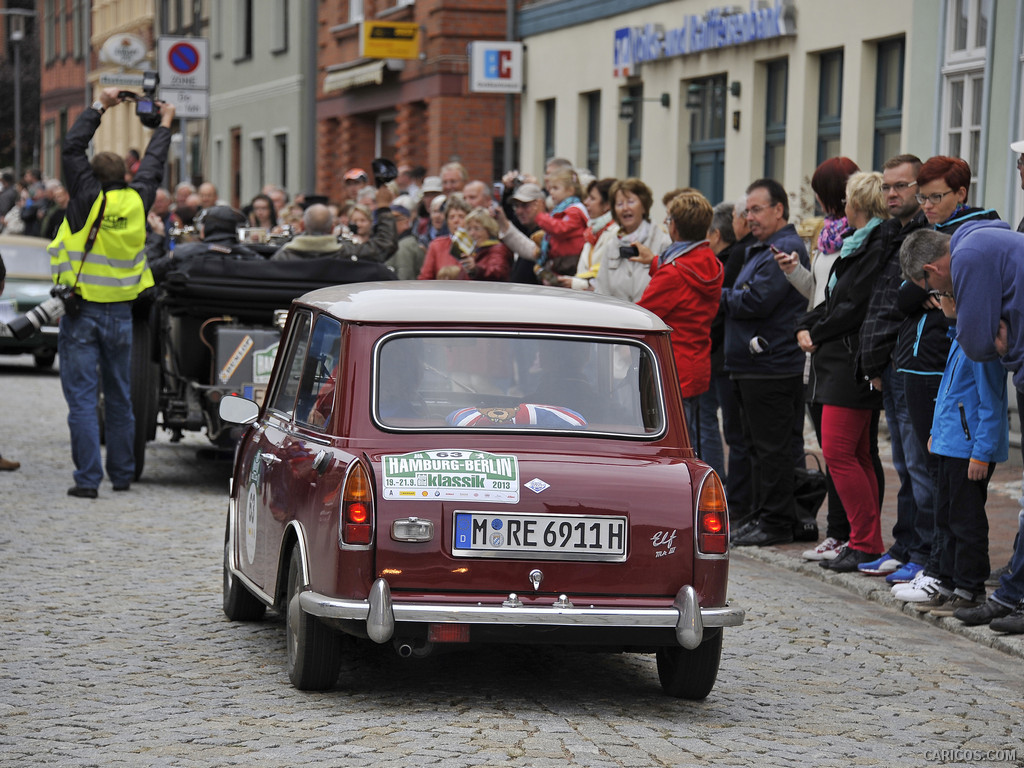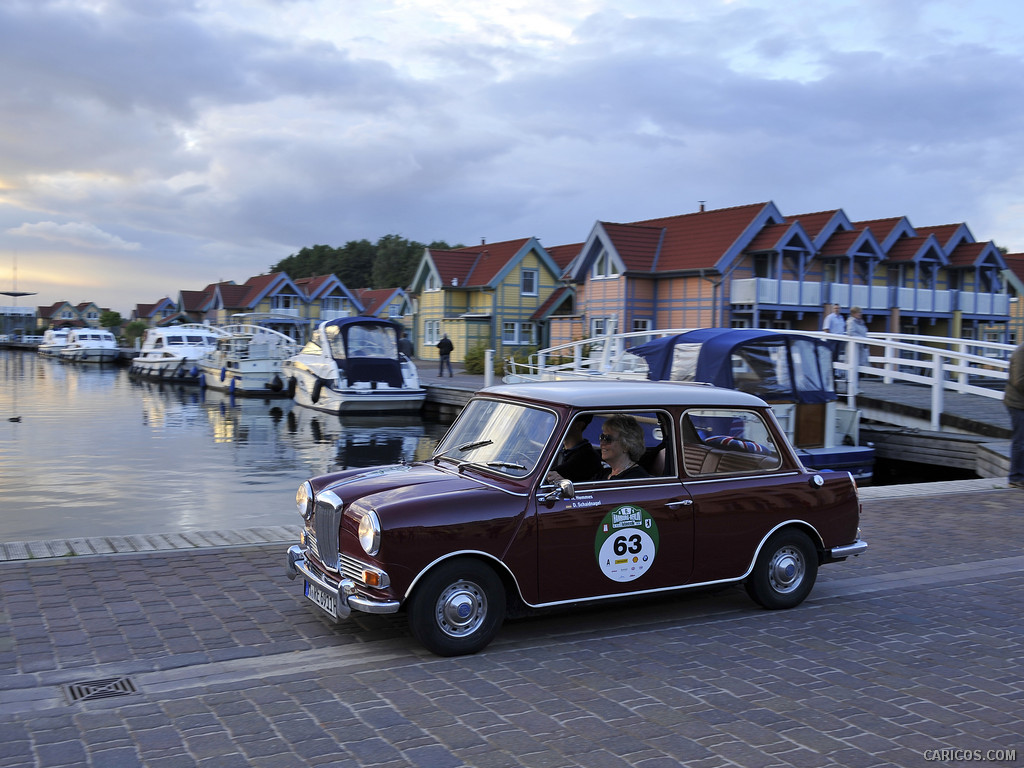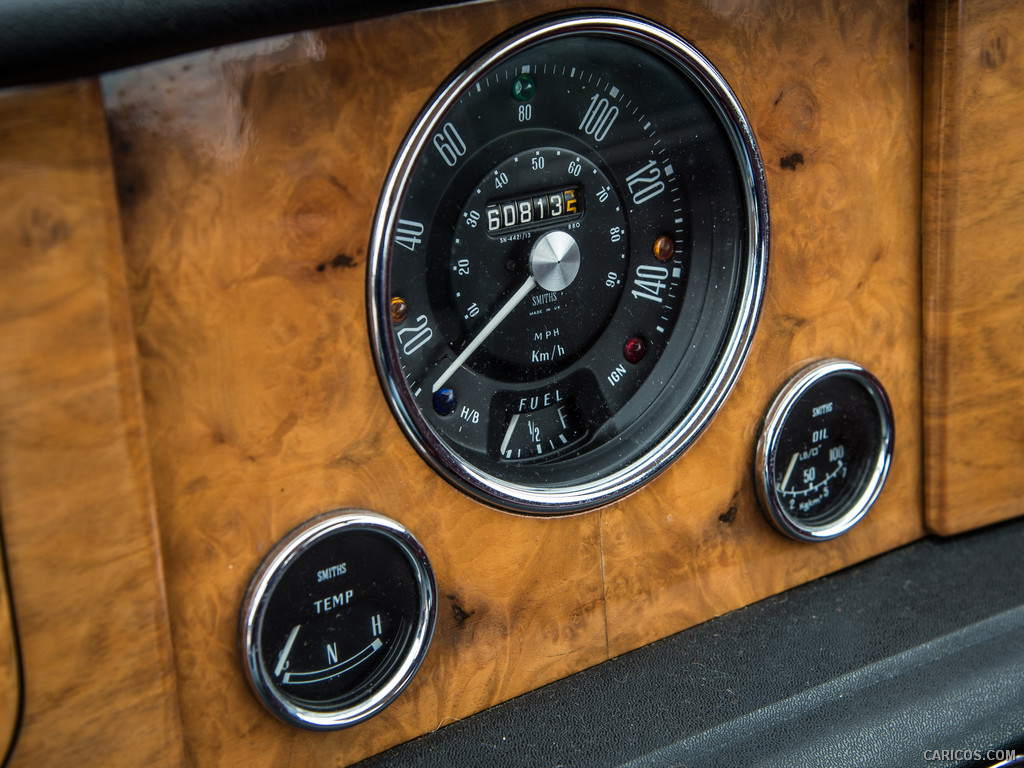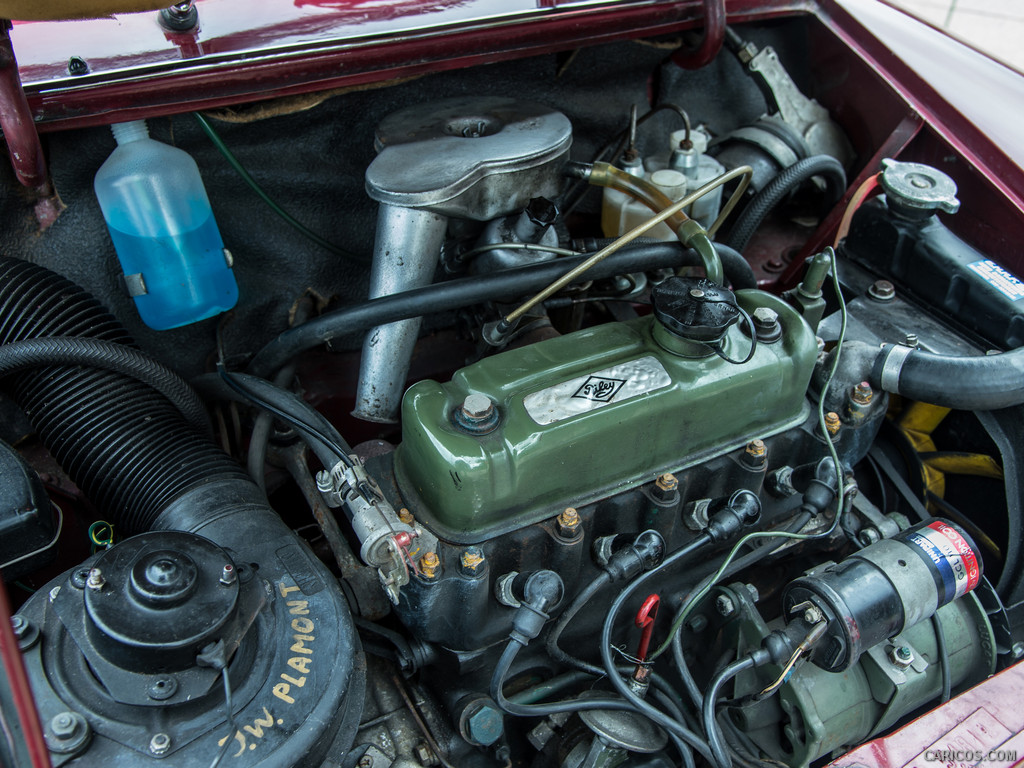Mini Riley Elf
The Riley Elf is unmistakably a Mini, while also having a character all of its own. This model was introduced in 1961 as a more elite version of the classic Mini and extended the range of the Riley marque, which also belonged to the British Motor Corporation (BMC). The Elf was immediately recognisable thanks to its tall radiator grille, extended luggage compartment and swallow-tail wings on the back. The participating car, customised for rallying, dates from 1969, the last year of production and features a splendid two-tone colour scheme in Damascus Red/Whitehall Beige, the advanced hydro-elastic suspension system and a 28 kW/38 HP four-cylinder engine.
The British trio is completed by the Mini Wildgoose, a particularly radical example of how much the revolutionary small car inspired the ingenuity of fans and modifiers right from the earliest days. Using the classic Mini van as a basis, British coachbuilders in the 1960s set about creating a camper van for adventurers who wanted to push to the limits of the principle of the creative use of space that characterised Mini. Wildgoose Ltd. in Worthing produced about 60 of the small camper between 1963 and 1968, only about 10 of which are estimated still to survive today. One of these is the turquoise and ivory vehicle with serial number 18, produced in 1965 as the top-of-the-range Mini Wildgoose “Brent” Super V. E. B., will take to the road this weekend.
The Mini Wildgoose has room for four people to travel and sleep and, among other features, has a two-ring gas hob, a sink and an electrically powered telescopic roof that offers a surprising amount of headroom in the living quarters. A modest tempo is guaranteed by the 850 cc four-cylinder engine with 25 kW/34 HP, enabling this bird to reach maximum speeds of 116 km/h. However, the “Hamburg-Berlin Classic” has never been about speed, and stopping for tea is almost mandatory.

 \n
\n
 \n
\n
 \n
\n
 \n
\n
 \n
\n
 \n
\n
 \n
\n
 \n
\n
 \n
\n
 \n
\n
 \n
\n
 \n
\n
 \n
\n
 \n
\n
 \n
\n
 \n
\n
 \n
\n
 \n
\n
 \n
\n
 \n
\n
 \n
\n
 \n
\n
 \n
\n
 \n
\n
 \n
\n
 \n
\n
 \n
\n
 \n
\n
 \n
\n
 \n
\n
 \n
\n
 \n
\n
 \n
\n
 \n
\n
 \n
\n
 \n
\n
 \n
\n
 \n
\n
 \n
\n
 \n
\n
 \n
\n
 \n
\n
 \n
\n
 \n
\n
 \n
\n
 \n
\n






